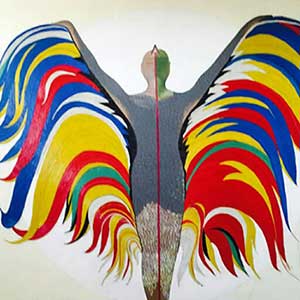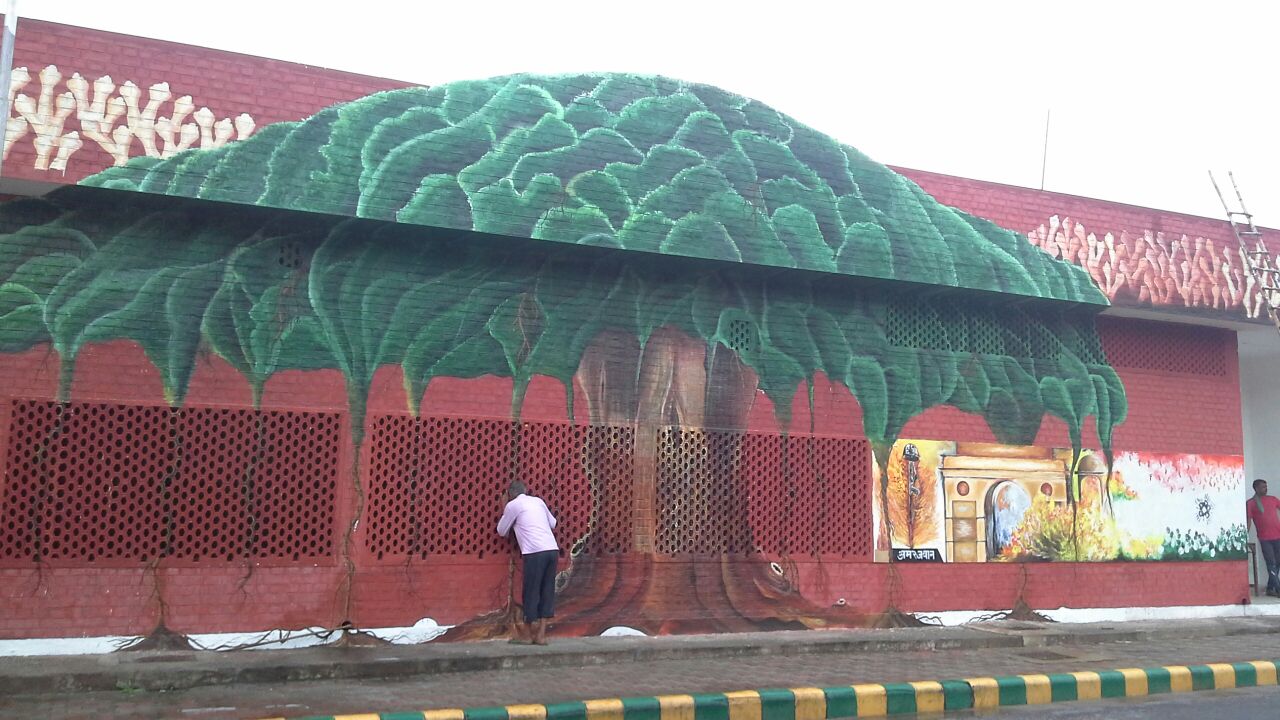India Vision Foundation – reforming prison system, and empowering women
By
Denise Nanni and Milena Rampoldi, ProMosaik. We have already talked to
different organisations about the prison system and how to improve and change it.
You can find our recent interview with the Howard League in London here. Today we
talked to Mrs. Monica Dhawan, Director of India
Vision Foundation about how to change the prison system, and about how to
help inmates, in particular women.

More
than two decades have passed since your organization was founded. Which changes
have been made in the Indian prison system?
than two decades have passed since your organization was founded. Which changes
have been made in the Indian prison system?
Now that we have completed 22 years when we look back we see that we have not made any policy level changes inside prisons. But during the course of time with able guidance & mentorship of Dr. Kiran Bedi we have made visible changes in the prisons pertaining to reforms, the conduct of inmates inside prisons, training prison officials. Some of the very early reforms started with Tihar where we started our first crèche project. This idea was appreciated and liked by the Supreme Court which further led to a ruling for all the prison to set up a crèche inside their prisons. We started our expansion and started working with the Gurugram in 2012. We became the pioneers in setting up a crèche inside the prison which further was replicated by all other prisons of Haryana. Further moving ahead we also started celebrating birthdays of children inside the prison which was also replicated ahead. As we started working with Haryana Prisons we a wave of reformation among all the prisons. We also took the administration hand in hand and started computer centre for them outside the prisons which had a very positive impact presently we have 9 operating computer centers inside & outside prisons. To close the loop we also have many inmates who have been part of the post release program and are re integrated back in the society successfully.
How
do you address inmates issues?
do you address inmates issues?
We address and cater to needs &
issues of the inmates through counseling. We follow three kinds of counseling
formats – Individual Counseling, Group counseling, Need based counseling. Also,
in most of the prisons there is a communication gap between inmates and the
officers ranging from lower to higher designation. According to our
observations we have seen that majority of district prisons have no female
superintendents which again leads a little delay when it comes to women centric
issues. We as a foundation act like a
facilitator between the inmates and the prison administration by trying our
best to address the issues in our capacity. When we feel that there is a need of
any intervention to be made by the authorities we take that to the
administration and get those issues resolved.
issues of the inmates through counseling. We follow three kinds of counseling
formats – Individual Counseling, Group counseling, Need based counseling. Also,
in most of the prisons there is a communication gap between inmates and the
officers ranging from lower to higher designation. According to our
observations we have seen that majority of district prisons have no female
superintendents which again leads a little delay when it comes to women centric
issues. We as a foundation act like a
facilitator between the inmates and the prison administration by trying our
best to address the issues in our capacity. When we feel that there is a need of
any intervention to be made by the authorities we take that to the
administration and get those issues resolved.

Why
is it important to reform the police as well?
is it important to reform the police as well?
We have been working for prison reformation for more than 20 years now. Prison administration works with the inmates day and night and yet at times give unable to cater needs of inmates due to large numbers. In order to spread reformation and sensitize them by creating a sustainable model we decided to train prison officials through different forms of training. These trainings helped them to come together on a common platform irrespective of designations and discuss the best practices & challenges from different parts of the country. Another visible result of these trainings is that the authorities start acknowledging the Foundation’s work and be active contributor towards the reformation process.
I saw that among your objectives
there is women’s empowerment: what action do you undertake in order to face
this social issue?
there is women’s empowerment: what action do you undertake in order to face
this social issue?
We believe that
training individuals is the best way to empower them, therefore we empower
inmates through our 3S model of Shiksha (Education), Sanskar (Value Education),
Skills (Training & Development). This model is based on the holistic
development of individuals that empowers them to do well when they get back to
the society. Under our first ‘S’ that is Shiksha (Education) we run programs
for Adult literacy and also for Higher education. For our second S that is
Sanskar (Value Education) we run programs that provide them Moral Education,
Health, Fitness & Spirituality. Our third ‘S’ is to deliver skill &
training which is based on the Need Analysis conducted with inmates. Under this
need identification process we make sure that we see what the inmate wants to
learn and how will that benefit an individual to pursue it further after
completing his/her sentence. Under our skills we train them through Art, Music
& dance Therapy, we provide E – learning via installation of Tabs to read
books, watch videos, learn stories, also help them upgrade them with technology
through computer education. Through our collaborative model we tie up with
various organizations and involve them in vocational trainings like Stitching
& Tailoring, Hair dressing, Carpentry, Baking and any trade that can be of
help to the inmates after and during imprisonment.
training individuals is the best way to empower them, therefore we empower
inmates through our 3S model of Shiksha (Education), Sanskar (Value Education),
Skills (Training & Development). This model is based on the holistic
development of individuals that empowers them to do well when they get back to
the society. Under our first ‘S’ that is Shiksha (Education) we run programs
for Adult literacy and also for Higher education. For our second S that is
Sanskar (Value Education) we run programs that provide them Moral Education,
Health, Fitness & Spirituality. Our third ‘S’ is to deliver skill &
training which is based on the Need Analysis conducted with inmates. Under this
need identification process we make sure that we see what the inmate wants to
learn and how will that benefit an individual to pursue it further after
completing his/her sentence. Under our skills we train them through Art, Music
& dance Therapy, we provide E – learning via installation of Tabs to read
books, watch videos, learn stories, also help them upgrade them with technology
through computer education. Through our collaborative model we tie up with
various organizations and involve them in vocational trainings like Stitching
& Tailoring, Hair dressing, Carpentry, Baking and any trade that can be of
help to the inmates after and during imprisonment.
Do
you cooperate with local authorities and institutions? If yes, how?
you cooperate with local authorities and institutions? If yes, how?
Yes, we work most of the times under collaborative model through this model we collaborate with Individuals, corporate and as many organizations who intend to work for the betterment of the inmates. We tie up with organizations and give inmates trainings & work accordingly. Quoting one example of ART CONNECT – It is a Pilot Art Project being run at GURGRAM DISTRICT PRISON Haryana under the leadership of Mr. Harinder Singh, Superintendent by a volunteer ‘nishu’ NATASHA CHADHA BHAMBRI – Indian Contemporary Visual Artist – (Art Connect). In the direction to ‘Save the next victim’ this project when started seemed like a far reaching endeavor but, with the overwhelming cooperation of the Inmates, Prison Authorities, IVF and ART CONNECT we have the exemplary prison in Gurgaon laden with art inside out. The combination of enthusiasm, patience and perseverance got the creativity to spread collaborations from elite organizations.



